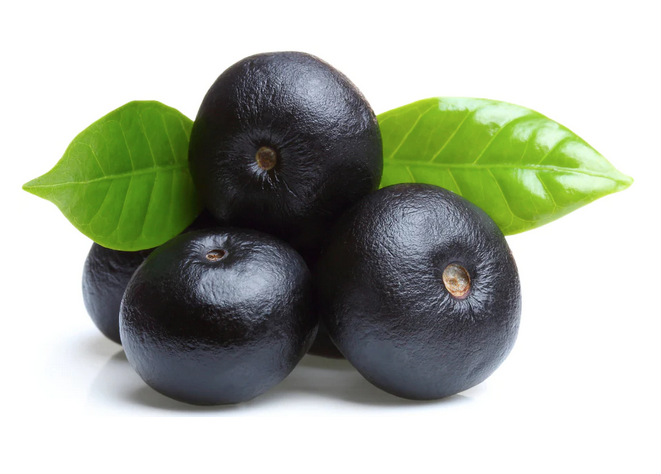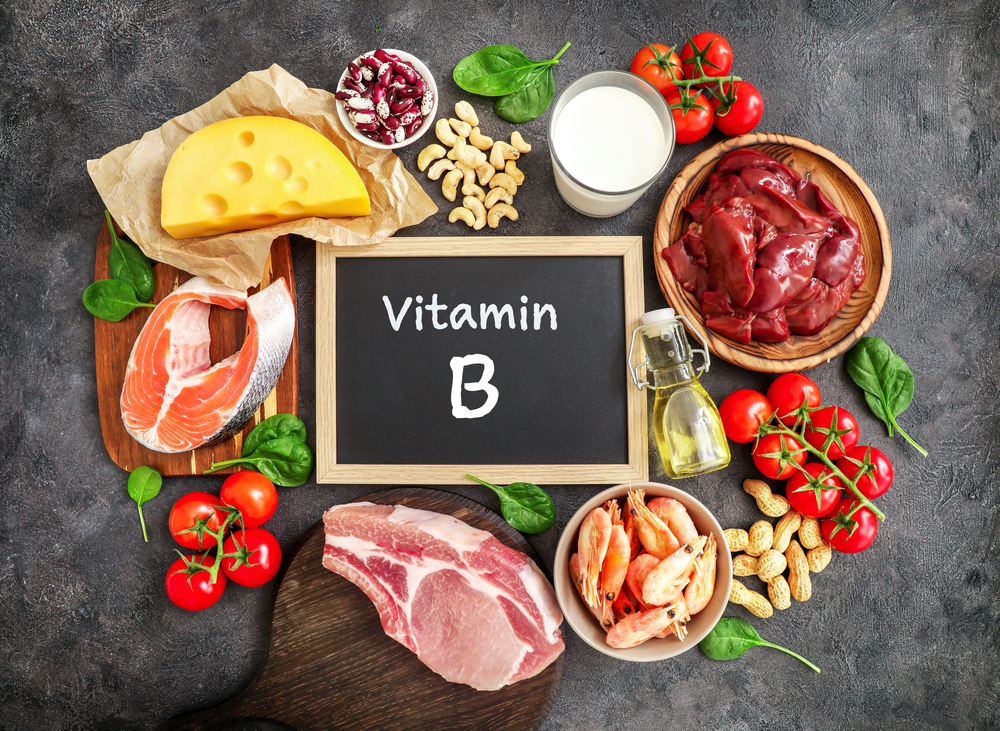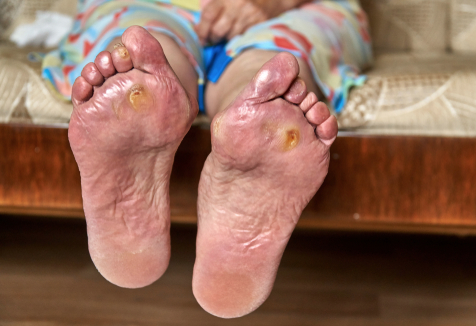Research on vitamins, herbs, and nutraceuticals continues to grow worldwide. Here are summaries of a few recent studies that have grabbed our attention here at Holistic Primary Care.

Modified Atkins Reduces Seizures in Drug Resistant Epilepsy
A modified Atkins diet—a less restrictive version of the “classic” high-fat, low carb ketogenic diet—can reduce seizure frequency and behavioral problems in drug-resistant epilepsy, according to a new study of 160 adolescents and young adults.
All patients were on at least 3 anti-seizure meds at maximum doses, yet continued to have more than two seizures per month. At six months, 26% of those following the diet had a greater than 50% reduction in seizures, versus just 2.5% among the controls who were on the drugs alone, with no dietary intervention.
This is not the only study to suggest that ketogenic diets like the modified Atkins can be helpful in reducing frequency and severity of seizures. But most previous studies have been in epileptic children. This is the first trial to show benefits for teens and adults (Mala Manral, et al. Neurology, Jan 2023).
High DHA Cuts Alzheimer’s Risk
A new prospective observational study of more than 1,400 participants in the Framingham Offspring Cohort project showed that those in the highest quintile for red blood cell docosahexaenoic acid (DHA) had a 49% lower risk of developing Alzheimer’s disease than those in the lowest DHA quintile. All participants were over age 65.
The apparent risk-mitigating effect of DHA was especially pronounced for carriers of the high-risk APOE-ε4 gene (Sala-Vila A, et al. Nutrients. June 2022).

This is one of a number of positive signals to emerge from the Framingham Third-Generation study. There were also robust correlations between higher red cell omega-3 concentrations, healthier brain structures, and better cognitive function (Satizabal C, et al. Neurology. 2022).
Açaí Reduces Arterial Stiffness
Daily supplementation with 200 grams of anthocyanidin-rich açaí-juçara (Euterpe edulis Martius) pulp resulted in a measurable change in pulse wave velocity (PWV), a measure of arterial stiffness, in a cohort of overweight individuals.

Cardiologists at the Rio Grande do Sul/University Foundation of Cardiology, Porto Alegre, Brazil, randomized 55 people with BMIs of 25 kg/m2 or greater, to restricted calorie diets with or without daily intake of 200 grams of Açaí, the small purple fruits of a particular species of Amazonian palm trees.
After 12 weeks, the subjects in the Açaí group showed a statistically significant reduction in PWV from baseline. There was no such change in the non-Açaí group (Arisi TO, et al. Phytother Res. 2022).
Açaí fruit has been an important staple food for indigenous Amazonian peoples for thousands of years. Over the last decade, it has become very popular in the US and internationally, often promoted as a “superfood” owing to its high antioxidant content, as well as to preliminary data suggesting it can reduce serum cholesterol levels.
B Vitamins Lower Metabolic Syndrome Risk
People in the highest quintile for total folate intake have a 61% lower incidence of metabolic syndrome compared with those in the lowest folate quintile. Similarly, those in the highest quintile for vitamin B6 had a 39% lower risk; those at the highest level of B12 had a 26% reduced risk.

Those are the key findings from a massive NIH-funded prospective study involving more than 4,400 young Americans followed for roughly 30 years, from 1985 to 2016.
The researchers took detailed diet assessments at years 0, 7, and 20, and measured serum concentrations of folate, B6 and B12 in years 0, 7, and 15.
Participants, half of whom were Black, had a mean age of 24 years on enrollment. Over the ensuing three decades, a total of 1,240 of the 4,414 participants (28%) were diagnosed with metabolic syndrome.
Across all racial and gender categories, the researchers found the same inverse relationship between B vitamin intake and reduced incidence of metabolic syndrome (Zhu J, et al. JAMA Network Open. 2023).
This is not the first paper to suggest that higher B vitamin intake can reduce cardiovascular risk. But it is the largest and most comprehensive prospective study to date. Though not an intervention trial, it does make a strong case for supplementation, because the vast majority of people in the highest B vitamin quintiles were supplement users.
The findings also challenge the notion that the heart benefits of B vitamins are solely due to lowering of homocysteine. In a subset of their subjects, Zhu and colleagues adjusted for serum homocysteine and still found significant risk reductions, suggesting that B vitamins have multiple effects on metabolism.
“Low status of these B vitamins may lead to dyslipidemia, vascular endothelial dysfunction, glucose intolerance, and insulin resistance through oxidative stress, systemic inflammation, and impairment of nitric oxide synthesis, which have been implicated in the pathogenesis of metabolic syndrome,” they concluded.
Vitamin D Supplementation May Prevent Melanoma
People who routinely take vitamin D supplements appear to have a markedly lower risk of melanoma compared with those who never take the “sunshine vitamin,” according to dermatological researchers at the University of Eastern Finland, Kuopio.

In this cross-sectional study, the researchers examined 498 adults (253 males, 245 females) between the ages of 21 and 79 years, for all types of skin cancers as well as non-cancerous lesions such as actinic keratoses and pigmented nevi.
Based on patient self-reported vitamin use, they divided the cohort into three groups: non-users, occasional users, and regular users. For 260 of the patients, they were able to measure serum vitamin D levels.
Vitamin D use did not appear to impact the likelihood of having actinic keratoses, pigmented nevi, basal or squamous cell carcinomas. But there seemed to be a clear effect on melanoma.
Among the non-users, 32.3% had melanomas at the time of examination or a past history of this type of skin cancer. In the regular users, 18.1% had present or past melanomas, a 56% comparative reduction in risk (Kanasuo E, et al. Melanoma Res. 2022).
This observation is certainly noteworthy, but the authors acknowledge that it is difficult to draw a firm conclusion about the preventive potential of vitamin D, because for the majority of the study participants, they relied exclusively on self-reported intake. In the subgroup for which they had actual serum vitamin D measurements, Kanasuo and colleagues did not see the same clear inverse relationships between the vitamin and skin-related parameters.
“Regular use of vitamin D associates with fewer melanoma cases, when compared to non-use, but the causality between them is obscure.”

Low Vitamin D Raises Diabetic Foot Ulcer Risk
Preliminary data from 339 older adults with type 2 diabetes shows that those with foot ulcers had markedly lower serum vitamin D levels compared to diabetics of similar age, ethnicity, and disease severity who do not have foot ulcers. The patients with foot ulcers had a mean serum vitamin D level of 29 nmol/L versus a mean 37 nmol/L among the ulcer-free patients (Wang F, et al. BMC Endocrine Disorders. Preprint May 2022).
The study, by researchers at the Department of Endocrinology, Air Force Medical Center, Beijing, is still under peer review, and the observed correlation does not prove causation. But the findings do suggest that the severity of diabetes is inversely related to vitamin D status.
Daily Potassium Cuts Heart Risk for Salt-Loving Women
Analysis of data from a European cohort of over 13,000 women showed that for women in the highest tertile of daily sodium intake, every one-gram increase in daily potassium conferred a 2.4mmHg lowering of systolic blood pressure.
This translated into a 13% reduction in incidence of cardiovascular events among the salt-loving women over a median follow-up of 19.5 years (Wouda RD, et al. Eur Heart Journal. 2022). Notably, this inverse relationship between potassium and cardiovascular risk was not observed among the men in the high-salt tertile.
“Potassium intake deserves more attention,” concluded lead investigator Liffert Vogt, MD, PhD, of Amsterdam University Medical Center.
“The association between potassium intake, systolic blood pressure, and CVD events is sex-specific,” the authors note. “The data suggest that women with a high sodium intake in particular benefit most from a higher potassium intake with regard to systolic blood pressure.”
Tart Cherry Boosts Exercise Performance
Short-term supplementation with anthocyanidin-rich tart cherry extract can boost exercise performance in hypoxic conditions, according to a new placebo-controlled study involving healthy young people.

Previous studies and metanalyses have suggested that tart cherry can increase performance speed or prolong time to exhaustion, possibly by increasing nitric oxide bioavailability and boosting oxygen delivery to working muscle tissue.
In the present study, researchers at Japan’s National Institute of Fitness and Sports, randomized 15 college-aged people (11 men, 4 women) to five days of a placebo or Nature’s Life tart cherry product (1200 mg capsules containing 100 mg anthocyanin). The subjects took the assigned treatment twice daily for 4 days, and then once on the 5th day, which was the day of the exercise tests.
The same participants then switched treatments for a second 5-day period of supplementation and testing.
The testing involved a series of strenuous cycling exercises under hypoxic conditions which pushed participants to exhaustion, defined as: 1) no increase in VO2 despite a further increase in work rate; 2) heart rate at 90% of age-predicted max; 3) a rating of 19 on Borg’s scale of perceived exertion, or 4) inability to maintain a pedaling rate above 50 rpm. During the exercise periods, the researchers measured a range of metabolic variables. Thirteen of the 15 volunteers completed the full study.
Compared with placebo, tart cherry increased the time to exhaustion in 10 of the 13 participants. The mean time to exhaustion was 940 ± 84 seconds for the supplement versus 912 ± 63 seconds for the placebo. The difference was small but statistically significant (Horiuchi M, et al. Nutrients. 2023).
The tart cherry reduced hypoxia deoxygenated hemoglobin (HHb) while increasing both tissue oxygen saturation (StO2), and peripheral arterial oxygen saturation (SpO2) in the vastus lateralis muscle tissue, all of which suggests improved oxygen supply to the muscles. It also reduced urine levels of 8-hydro-2′ deoxyguanosine (8-OHdG), indicating an antioxidant effect.
Probiotic Combo Reduces Chemo-Related Dysbiosis
Supplementation with a probiotic containing Bifidobacterium infantis, Lactobacillus acidophilus, Enterococcus faecalis, and Bacillus cereus, reduced chemotherapy-associated dysbiosis, restored gut flora diversity, and attenuated side effects in a cohort of patients with colorectal cancer (CRC).
Researchers at Nanchang University Hospital, China, randomized 100 patients undergoing surgical resection and chemotherapy for CRC to a placebo or to the probiotic combo taken thrice daily, from the third postoperative day to the end of the first course of chemotherapy (Capecitabine plus Oxaliplatin, XELOX regimen). The probiotic tablets provided over 0.5 × 106 CFU of B. infants, L. acidophilus, E. faecalis, and over 0.5 × 105 CFU of B. cereus, respectively.
Chemotherapy regimens like XELOX can wreak havoc on a patient’s gut microbiome, reducing microbial diversity and decimating “friendly” Firmicutes while promoting overgrowth of Bacteroidetes, Proteobacteria, and Verrucomicrobia. These changes contribute to the burden of symptoms and side effects that many patients experience.
The data indicate that compared with the placebo, the probiotic reduced incidence of chemo-associated nausea (11% vs 34%), reflux (4% vs 12%), abdominal pain (6% vs 24%), distention (10% vs 28%), constipation (8% vs 28%), and diarrhea (16% vs 40%).
The probiotic patients showed increased overall microbial diversity, reduced levels of problematic organisms like Akkermansia and Clostridium, and restoration of beneficial bugs like Prevotella, Lactobacillus, and Bifidobacterium. Fecal analysis showed an increase in production of butyrate, acetate, propionate, and other important short-chain fatty acids (Huang F, et al. Nutrients. 2023).
“These results support the beneficial effects of the probiotic interventions as novel alternative or complementary strategies in chemoprevention,” the authors concluded.
END







